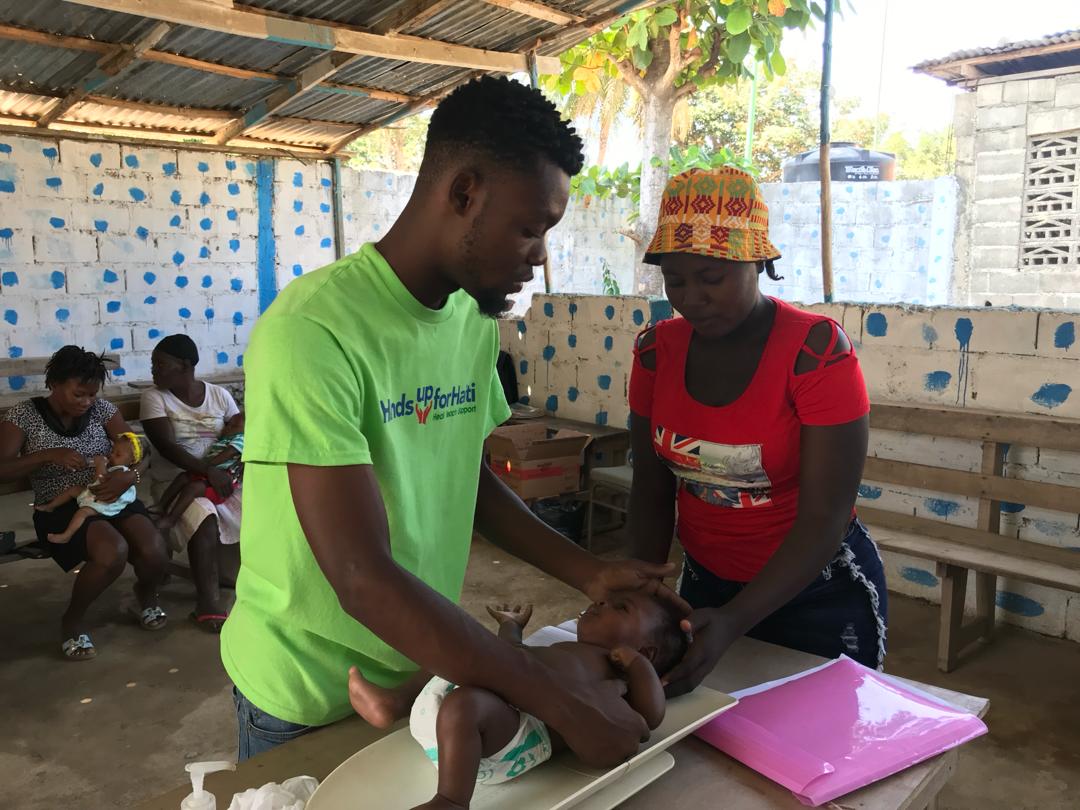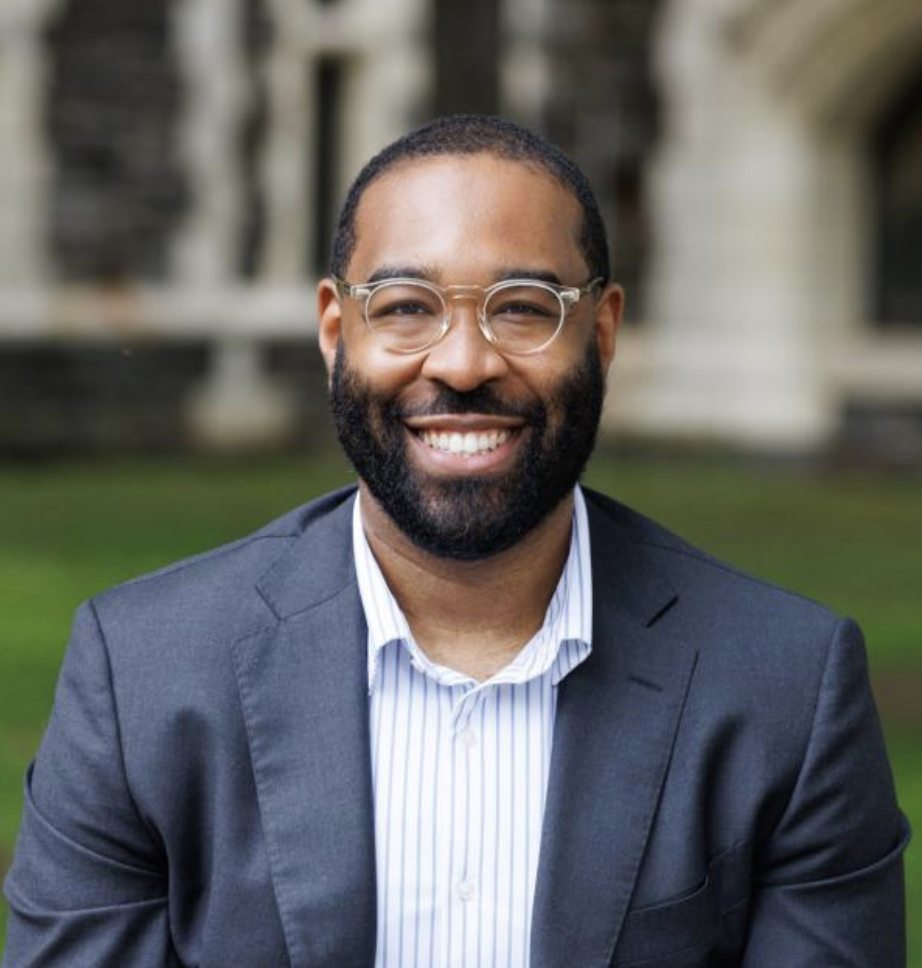By Dr. Jill Ratner, President and Co-Founder, HUFH. Trip Leader, March 2015
On this most recent trip to Haiti, we delivered our first Master Training in Essential Newborn Care: Helping Babies Survive.
We had planned for thirty doctors, nurses and nursing students to come for our full day seminar to introduce the AAP program that teaches newborn care after birth, focusing on decreasing infant mortality after birth. This is the companion program to Helping Babies Breathe, which teaches life saving newborn resuscitation.
Most of the group had attended the previous day’s HBB session.
I was afraid they would have been saturated with information before we ever began, but in fact they arrived earlier than the day before and seemed eager to begin.

Setting Up
I had trained at the AAP initial roll out of the program in November and was very excited to see this program in the field. Fortunately, my team included neonatologists, neonatal nurses, pediatricians, and a pediatric nurse practioner, who were able to familiarize themselves with the program before the course.
Thirty-Nine professionals arrived and quickly organized themselves around the tables and chairs set up. Madame Bwa, a lay midwife, who is in her 70’s and has been delivering babies since age 12, joined these young doctors and nurses, and added her enthusiasm and experience to the day.
After an opening song that asked for a successful day, we began the training.
Like HBB, telling a story is central to the course, known as HBS, Helping Babies Survive. I asked everyone in the room to close their eyes and picture a baby that had just been born and was healthy. The baby breast fed well, stayed warm on the mother and was discharged home with the mother having a good idea of how to keep the baby healthy. Then, I asked them to close their eyes and picture a baby that was born healthy. The mother received no help; the provider came back 6 hours later to send them home, to find the baby was dead. We then proceeded with the course to see how we could transform that story.
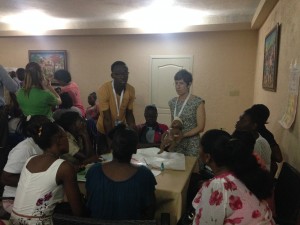
Dr. Lauren Blum and translator Franz Toussaint working in small groups.
We discussed the timeline of breast feeding, giving initial treatments to the baby to prevent infection and bleeding, and classifying the baby to determine the need for further care based on physical exam, weight of the baby, feeding and respiration.
Each aspect of the teaching was followed by acting out the parts of the mother who had just delivered the baby and the provider giving the necessary instruction in newborn care. Everyone participated and switched roles. The room was filled with the entire group practicing their skills in communicating the information they had learned to the “mother”. This form of simulation is a major teaching tool of these courses, designed to reinforce learning and to emphasize the skills of communication.
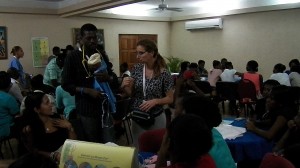
Dr. Leah Greenspan Hodor, a neonatologist, teaching.
We proceeded to discuss the need for prevention of hypothermia, the baby getting cold. The need for immediate skin-to-skin contact, breast-feeding in the first one hour of life, and extended skin-to-skin contact for the small baby was reviewed.
The audience was so engaged, and much of the information was very new to them.
We learned that in Haiti, Vitamin K, which prevents newborn bleeding, is often not given. Some of that is due to unavailability, but much of this is due to the under-recognition of the need. We informed the group, that it is estimated that in resource poor areas, 20% of mothers are deficient in vitamin K to a level where the baby is at risk to bleed internally.
We discussed universal eye care and cord care to prevent infection.
The need for early breast-feeding and the need to support and encourage all mothers in breast-feeding was our next major topic. Although everyone in the room realized that breast-feeding was important, many of the participants expressed the belief that many women don’t make milk, and wanted to ask about alternative feedings such as formula. Our energy quickly focused on communicating that all should breast feed and that milk production will be improved by feeding and that supply will increase if the baby sucks appropriately at the breast. We discussed the latch, problems with breast-feeding, and milk expression and cup feeding for the small infant with a poor suck. If we had done nothing else this day but discuss these issues it would have been worth the visit to Haiti.
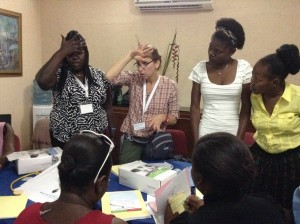
Learning to take temperature. Dr. Leah Greenspan Hodor and a group of health care professionals.
In the afternoon we proceeded to discuss “danger signs” recognition of jaundice and infection in the newborn, recognition of low body temperature
and seizures and the need to treat for infection, and transfer the baby to the hospital. We talked about teaching this course to traditional birth attendants and ways the course might be modified based on their abilities to perform tasks such as intramuscular injections of antibiotics. We all agreed that teaching the “danger signs” were most important so that the TBAs could get the baby to the health care center for further care.
The course was incredibly well received, and clearly passed on additional medical knowledge to the providers in attendance. We are all very excited for the materials being translated into French, as since the course is brand new, all materials are in English, with great illustrations.
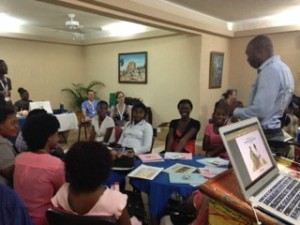
Dr. Roosevelt, one of our Haitian colleagues, thanking HUFH for the HBS course.
In the end of the day, this was my most satisfying part of the trip. Being able to empower local doctors and nurses with knowledge of newborn care, identify ways we can provide them with the tools they need, and emphasize the development of communication skills they can utilize with their patients to me was crucial to our mission here in Haiti.
As an organization, I believe this course should be repeated on any trip that a facilitator is present, as I believe we will impact newborn mortality significantly with the exchange of this information


